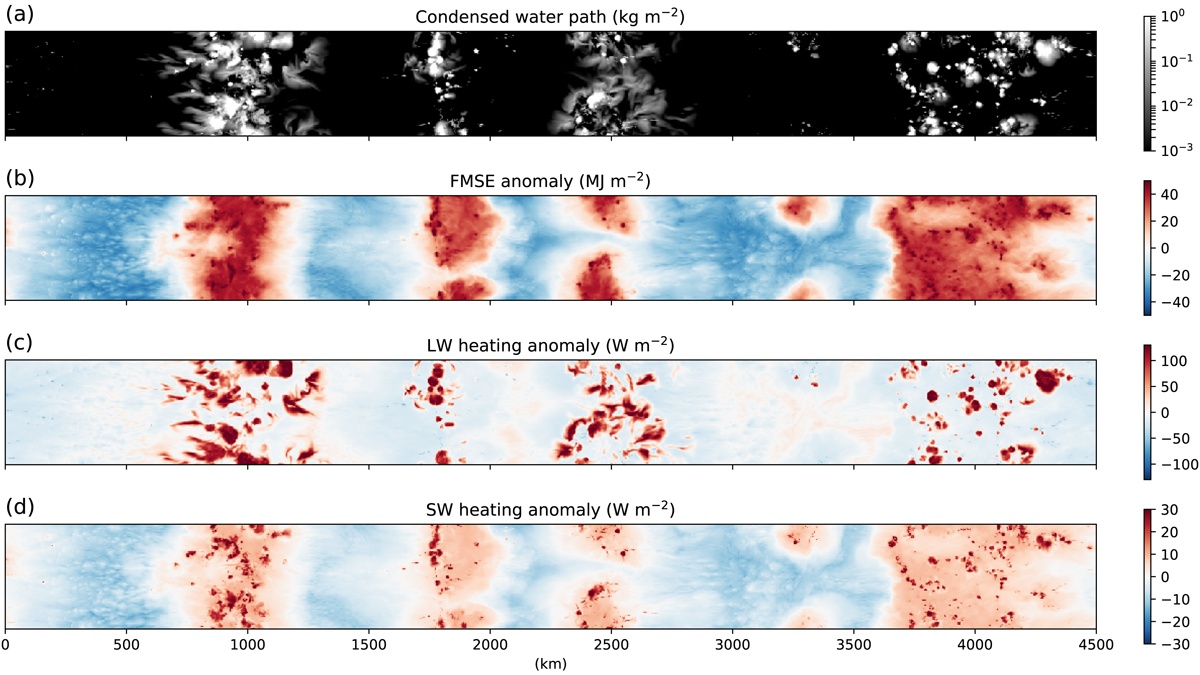Editors’ Highlights are summaries of recent papers by AGU’s journal editors.
Source: Journal of Advances in Modeling Earth Systems
The spontaneous clustering of convection, or “convective self-aggregation”, is a common feature in weather and climate models. Previous studies have shown that interactions between radiation and cumulus convection are crucial for the development of aggregation. Pope et al. [2021] study convection within a set of idealized simulations using the Met Office Unified Model, comparing simulations with different sea surface temperatures (SSTs) and resolutions.
The authors use a novel approach of applying a cloud classification scheme and then calculating the contribution of each cloud type to radiative feedbacks on self-aggregation. They find that the contribution of radiative interactions with clouds to aggregation decreases with SST because the amount of high-cloud decreases, and the difference in absorption of solar radiation between humid and dry regions becomes less significant for aggregation.
This analysis method provides a new framework to compare the effects of radiative interactions on self-aggregation across different SSTs and model configurations to help improve our understanding of self-aggregation.
This research article is published in the special collection Using Radiative-Convective Equilibrium to Understand Convective Organization, Clouds, and Tropical Climate
Citation: Pope, K. N., Holloway, C. E., Jones, T. R., & Stein, T. H. M. [2021]. Cloud-radiation interactions and their contributions to convective self-aggregation. Journal of Advances in Modeling Earth Systems, 13, e2021MS002535. https://doi.org/10.1029/2021MS002535
—Jiwen Fan, Editor, Journal of Advances in Modeling Earth Systems

